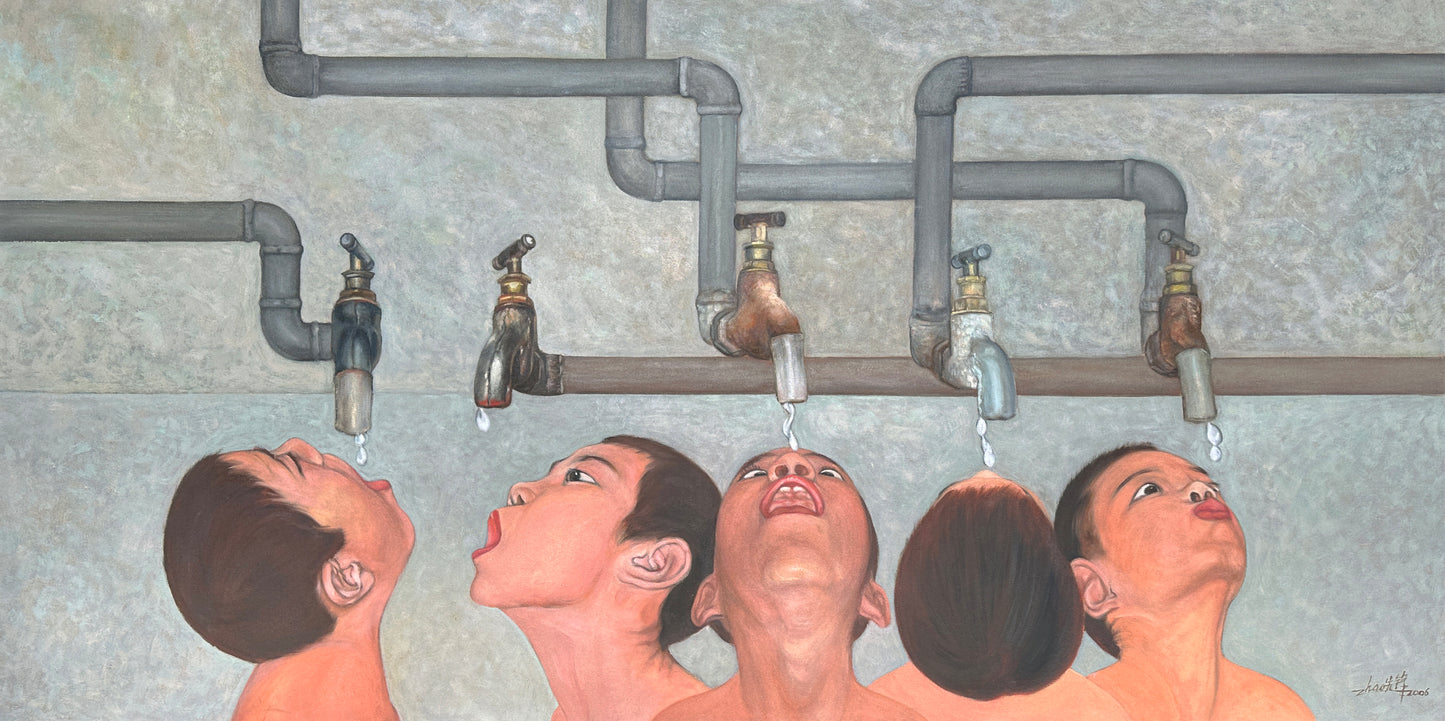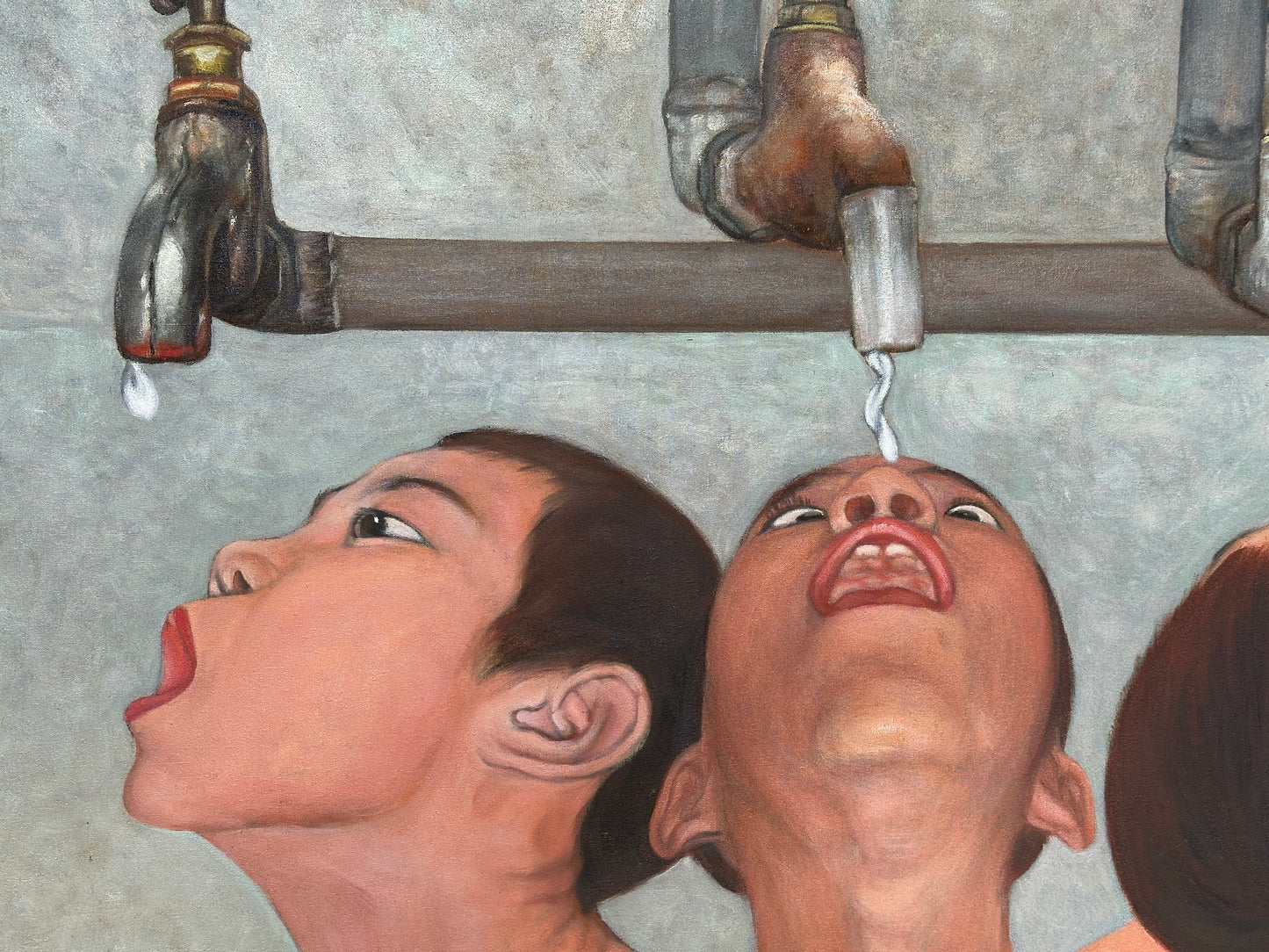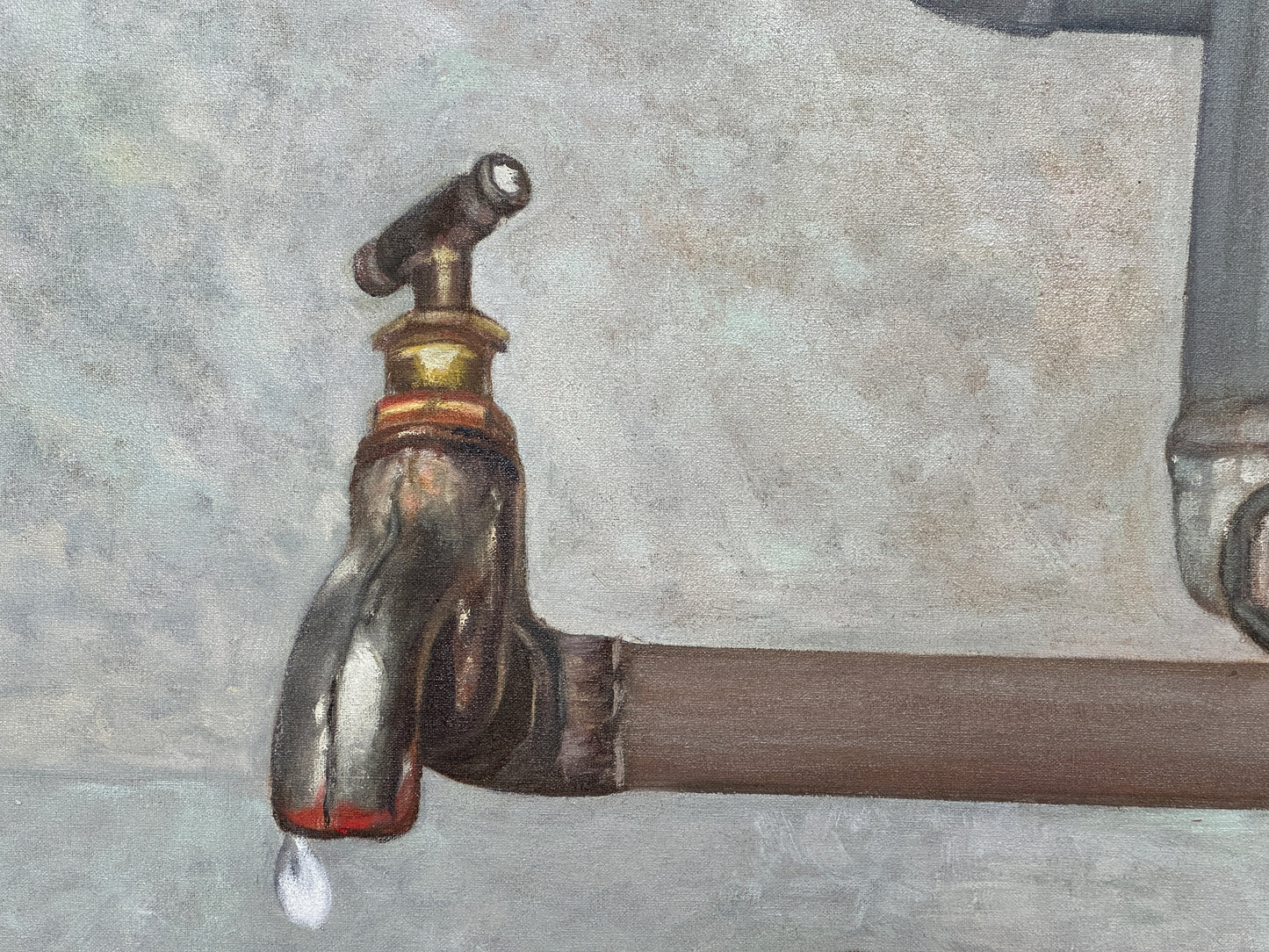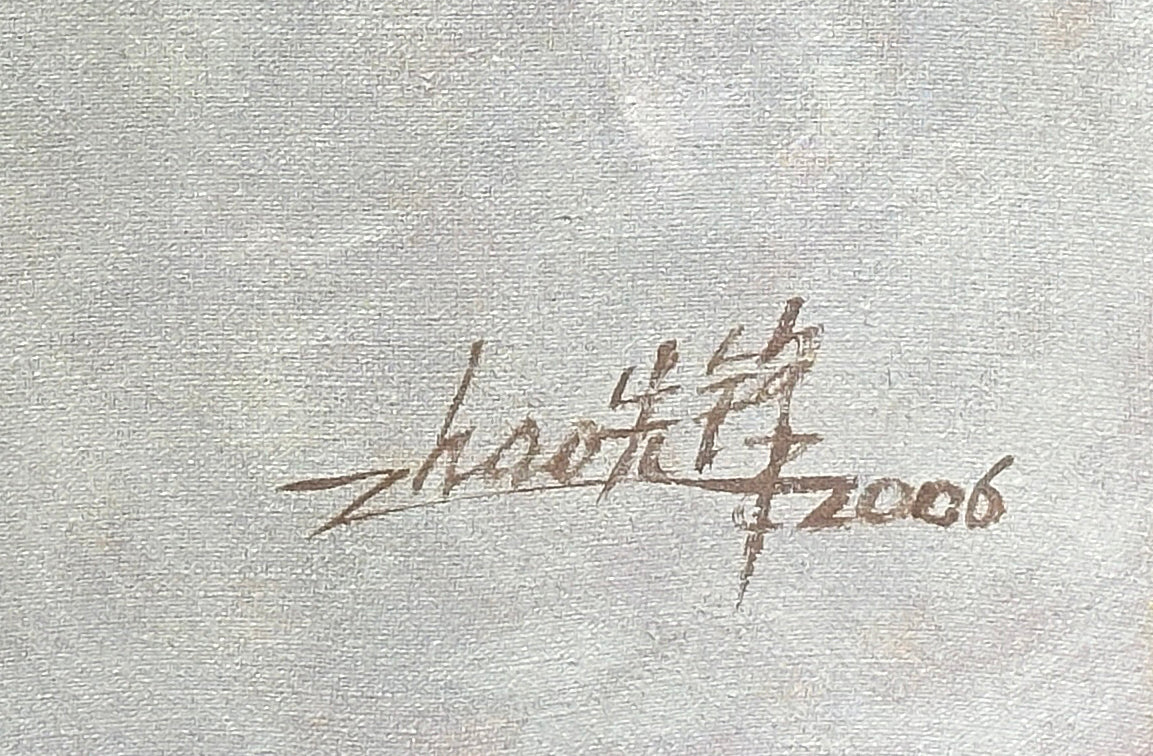bqt.art
Water of life III, 2006
Water of life III, 2006
Couldn't load pickup availability
Share
Artist: Zhao Xingfeng 趙先鋒
Title: Water of life III | 生命系列 3
Materials: Oil on canvas
Size: 80 x 160 cm | 31.5 x 63 inch (Mounted Frameless)
Rarity: Unique
Medium: Painting
Signature: Hand-signed by artist
Condition: Excellent
Frame: No
The oil painting titled "Water of Life III" by Zhao Xingfeng is a deeply evocative and thought-provoking work that combines realism and symbolism to address critical issues surrounding scarcity, survival, and human resilience. The painting’s intricate details and emotional weight make it a powerful commentary on socio-environmental themes.
---
Composition and Subject Matter
The painting is structured around a group of children reaching towards dripping faucets for water, with their mouths open in an act of desperation. The children’s upward gazes and postures create a striking dynamic that draws the viewer’s attention to the limited flow of water, which serves as both the literal and symbolic centerpiece.
1. Focus on the Faucets: The rusted, corroded faucets, central to the composition, are depicted as aged and decayed, symbolizing neglect, scarcity, and the fragility of human access to life-sustaining resources.
2. Children’s Positions: The arrangement of the children, each vying for the meager drops, introduces a sense of collective yearning and struggle. Their expressions, though subdued, convey desperation, reliance, and the human instinct to adapt to adversity.
---
Color Palette and Texture
1. Muted and Neutral Background:
- The background is rendered in neutral, grayish tones that emphasize bleakness and austerity. This muted backdrop allows the children and the faucets to stand out as the focal points.
- The textured surface suggests decay and environmental degradation, reinforcing the theme of resource depletion.
2. Human Skin Tones:
- The vibrant flesh tones of the children contrast sharply with the dullness of the pipes and the background, symbolizing life, hope, and the fragility of human existence amidst harsh conditions.
3. Rusted Metal:
- The intricate detailing on the faucets and pipes captures the wear and tear of time. The reddish-brown rust tones evoke neglect, abandonment, and the inevitability of decay.
---
Symbolism and Interpretation
1. The Water Drops:
- Water, a universal symbol of life and renewal, is depicted here as scarce and precious. The tiny drops falling from the faucets emphasize the disparity between abundance and scarcity, highlighting the vulnerability of human survival when access to basic resources is limited.
2. Children as a Symbol of Innocence and Vulnerability:
- The children represent the most vulnerable members of society, dependent on systems and resources beyond their control. Their struggle for water metaphorically reflects larger societal and environmental issues, such as inequality, resource mismanagement, and climate change.
3. The Rusted Faucets and Pipes:
- These decaying structures symbolize outdated or failing systems, whether governmental, societal, or environmental. The lack of flowing water implies systemic failure, neglect, or misuse of resources.
---
Brushwork and Realism
1. Hyperrealism:
- The artist employs meticulous brushwork to create a hyperrealistic depiction of the scene. The detailed rendering of the children’s facial features, the texture of the pipes, and the delicate water droplets lends the painting a visceral quality, making the viewer feel the urgency and gravity of the moment.
2. Textural Contrast:
- The smoothness of the children’s skin contrasts with the rough, corroded surfaces of the pipes, emphasizing the tension between human life and deteriorating infrastructure.
---
Emotional and Social Impact
1. Emotional Resonance:
- The painting evokes strong emotions, from empathy to discomfort. The depiction of thirsty children relying on such limited water supplies compels viewers to confront the stark reality of water scarcity and the human cost of environmental degradation.
2. Social Commentary:
- “Water of Life III” serves as a critique of social and environmental inequities. It highlights the unequal distribution of resources and draws attention to the lives of those who bear the brunt of systemic failures, particularly in marginalized or impoverished communities.
3. Call to Action:
- The painting’s title, “Water of Life,” underscores the essential nature of water as a life-sustaining force. The piece challenges viewers to reflect on their own relationship with water and their role in addressing global issues of inequality, sustainability, and resource management.
---
Overall Mood and Atmosphere
The painting’s atmosphere is one of urgency and tension. While the children’s postures suggest hope and resilience, the scarcity of water and the decaying infrastructure create a sense of unease. This duality of hope and despair mirrors the broader struggles of humanity in the face of resource scarcity and environmental crises.
---
Summary
“Water of Life III” is a masterful oil painting that not only showcases technical skill but also delivers a powerful message about the human condition, resource scarcity, and the environmental and social challenges of our time. The artist’s ability to weave symbolism, realism, and emotion into a single composition makes this piece a poignant reminder of the fragility of life and the critical importance of equitable resource management.








